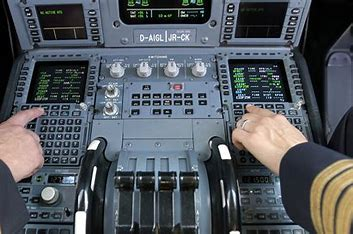Large
commercial planes a few years ago often had extra crew members. Crew members
include a flight engineer responsible for managing engine performance, and fuel
systems. In addition, the aircraft also have an additional navigator, they are
responsible for planning the route and ensuring that the pilot follows the
previously planned route, and responsible for checking the position of the
aircraft. However, now computers have been developed and put into operation to
replace the flight engineer and navigator to reduce their workload. An FMS can
be thought of as a master computer system that has control over all other
systems, computerized and otherwise. As such, it coordinates the adjustment of
flight, engine, and airframe parameters either automatically or by instructing
the pilot how to do so. All aspects of the flight are considered, from
preflight planning to pulling up to the jet-way upon landing, including
in-flight amendments to planned courses of action (Guide, 2023).
FMS
is currently a very important system in aircraft with the main function that is
to guide the aircraft to follow the intended flight path. Besides, FMS also
connects with many other important systems. To do this the FMS must be kept up
to date with Aeronautical Information Regulation and Control (AIRAC). AIRAC
includes people in the system such as aircraft and pilot, air traffic control,
air traffic flow management, and flight planner. AIRAC data includes
information on all the navigation such as airport data, runway data, ILS
procedures, departure and arrival procedures, airway and waypoints, and VOR
station. This needs an update every 28 days.
With
the main task of locating aircraft, FMS constantly checks the current position
of the aircraft to ensure that the pilot is flying exactly on the intended
flight path. To know where the aircraft is, the FMS system uses three main
sources to check the position. First, use the GPS receiver to determine the
current location. Or it can cross-check multiple VOR or NDM stations, along
with a DME check to find the current position. Finally, the FMS can use an
onboard inertial reference system (IRS) where available, usually a gyroscope or
accelerometer system. If all three systems are present on the aircraft, then
the FMS will determine the position of the aircraft using all three systems
together.
Another
powerful application where FMS can replace engineers is that it can be
connected to an engine management system to determine engine performance and
fuel usage. From there, a plan of the most efficient fuel use to complete the
route is generated based on the weight of the aircraft and some other
information. FMS can also determine the optimal climb rate after take-off and
determine the most suitable cruise speed to save fuel. This, in turn, helps
airlines save money by using less fuel while spending less money on maintenance
because the engines are being used efficiently so they are less likely to wear
out.
In
short, the FMS is a computer with navigation and some amazing functions.
Various navigation sensors such as the global positioning system (GPS) will
automatically communicate with the FMS to provide a location reference,
allowing the system to calculate the best way to reach the destination. Also
provides calculations to help pilots know the aircraft's range under different
conditions and predict if fuel shortages will occur.
References
Aeronautics
guide (n.d). 2023. Aircraft Flight Management System (FMS).
https://www.aircraftsystemstech.com/p/flight-management-system-fms.html



Comments
Post a Comment